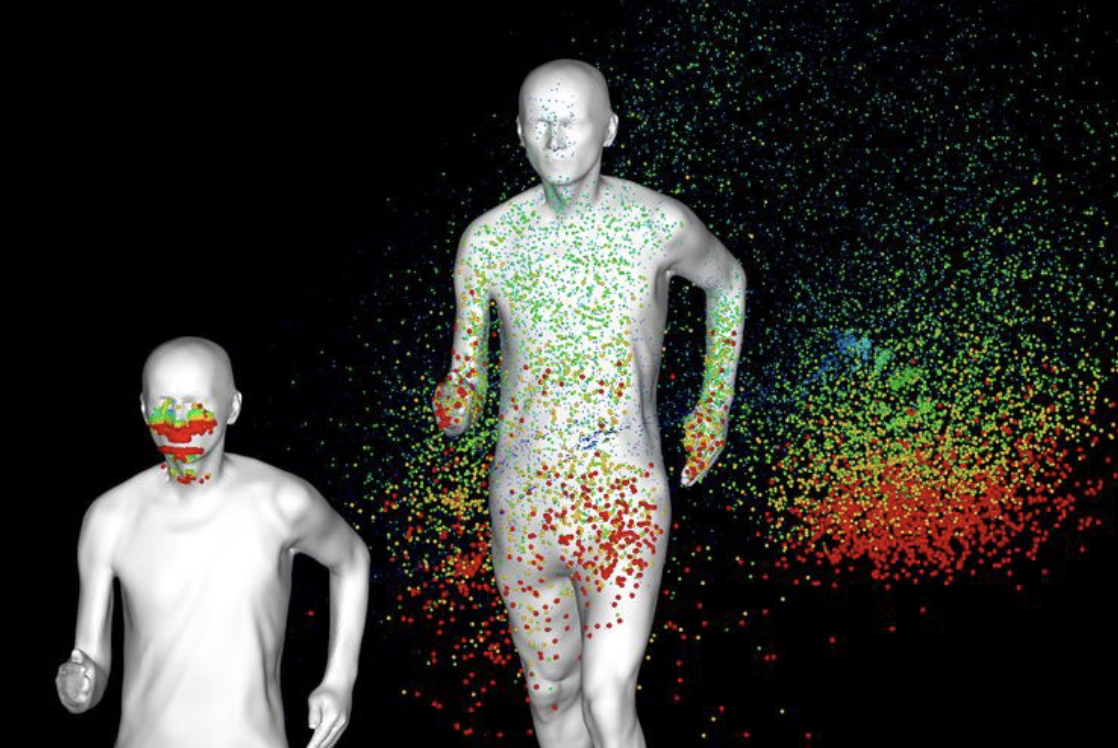コロナ自粛の毎日…いかがお過ごしですか?
大会開催の目処が立たず、皆さん個々に走力の維持に苦戦しておられることとお察しします。そんな状況でのランニングですが、外を走るのに多少の不安もあるのではないでしょうか。こんな海外文献を見つけました。要約したのでよろしかったらご参照ください。
*平易な日本語を目指して多少大まかな和訳になっています。もしも不適当な解釈がありましたら、ブログのお問い合わせから教えて下さい。
The typical social distancing rule which many countries apply between 1–2 meters seems effective when you are standing still inside or even outside with low wind. But when you go for a walk, run or bike ride you better be more careful. When someone during a run breathes, sneezes or coughs, those particles stay behind in the air. The person running behind you in the so-called slip-stream goes through this cloud of droplets.
多くの国では人と人の間隔を1~2m空けることが原則であり、室内、あるいは少し風のある屋外でも感染予防に有効だと考えられています。しかし散歩、ランニング、自転車に乗っている時にはもっと注意すべきです。走っている人が呼吸したり、くしゃみしたり、咳をしたりすると、その微粒子が空気中に漂っているのです。人の「真後ろ」を走る人はこの吐息、くしゃみ、咳の液滴が浮遊する「slipstream」を通過しています。
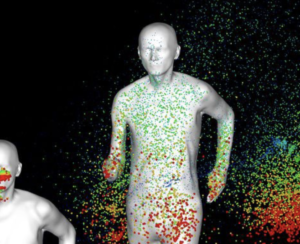
The researchers came to this conclusion by simulating the occurrence of saliva particles of persons during movement (walking and running) and this from different positions (next to each other, diagonally behind each other and directly behind each other). Normally this type of modelling is used to improve the performance level of athletes as staying in each other air-stream is very effective. But when looking at COVID-19 the recommendation is to stay out of the slipstream according to the research.
この研究では、以下のように条件を変えて唾液の微粒子がどのように発生するかをシミュレーションしました。
・動き;歩行・ランニング
・位置関係;隣合う・斜め後方・真後ろ
この種のモデリングは通常アスリートのパフォマンス改善するのに用いられます。互いの気流にとどまること(風よけを使うこと)が非常に効果的だとされます。しかしコロナ感染予防のためには人の真後ろ「slipstream」を避けるように勧めています。
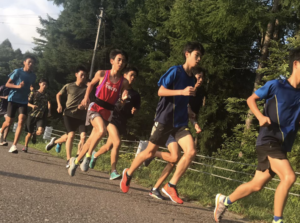
The results of the test are made visible in a number of animations and visuals. The cloud of droplets left behind by a person is clearly visible. “People who sneeze or cough spread droplets with a bigger force, but also people who just breathe will leave particles behind”. The red dots on the image represent the biggest particles. These create the highest chance of contamination but also fall down faster. “But when running through that cloud they still can land on your clothing” according to Professor Bert Blocken.
テストの結果はいくつかのアニメーション、画像で視覚化されています。「吐息などの雲」が残されていることははっきりと見て取れます。くしゃみや咳をした人はその液滴を多量に拡散していますが、普通に呼吸した人でさえも微粒子を漂わせています。赤い点は最大量の微粒子群を表現しています。これには最大級の感染リスクがありますが、速く落下します。しかしながらこの中を走り抜けたら、微粒子はランニングウエアに付着します。
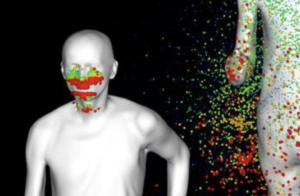
Out of the simulations, it appears that social distancing plays less of a role for 2 people in a low wind environment when running/walking next to each other. The droplets land behind the duo. When you are positioned diagonally behind each other the risk is also smaller to catch the droplets of the lead runner. The risk of contamination is the biggest when people are just behind each other, in each other’s slipstream.
このシミュレーションから言えることは、
微風の中で「隣り合って」歩いたり、走ったりする際には人と人の距離を特に大きく空ける必要性はそれほどありません。吐息などの液滴は2人の後方に落下します。また「斜め後方」にいる場合でも先行する人からの感染リスクは小さくなります。最大の感染リスクはまさに真後ろ“slipstream”にいる場合です。
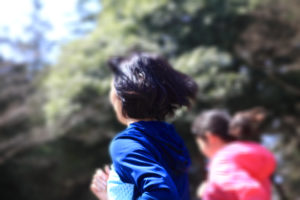
On the basis of these results the scientist advises that for walking the distance of people moving in the same direction in 1 line should be at least 4–5 meter, for running and slow biking it should be 10 meters and for hard biking at least 20 meters. Also, when passing someone it is advised to already be in different lane at a considerable distance e.g. 20 meters for biking.
この結果より、先行する人の真後ろを歩く場合には少なくとも4~5mを空けること、ランニングや低速の自転車であれば先行する人と10m、高速の自転車ならば先行車と20mの間隔を空け、前方にいる自転車を抜く場合には予め20m前には違うレインに寄っておくべきです。
This is definitely information I will be taking into account and it also puts in perspective the closing of busy parks etc. Perhaps the better way is just running in the street, on your own or at least with sufficient distance. Stay safe…
これは明らかに今後気にかけていく情報であり、混雑した公園などでも考慮する事柄です。おそらく街ラン、単独走あるいは十分な距離を保って行うのが良いでしょう。お気を付けて。
ランニング指導ご検討の方はこちらまで。
お身体の不調でお悩みの方は柳鍼灸院にお気軽にご相談ください。ランナーの方はランニングシューズをご持参ください。ランニングフォームのチェック、リハビリメニューを処方する場合があります。
